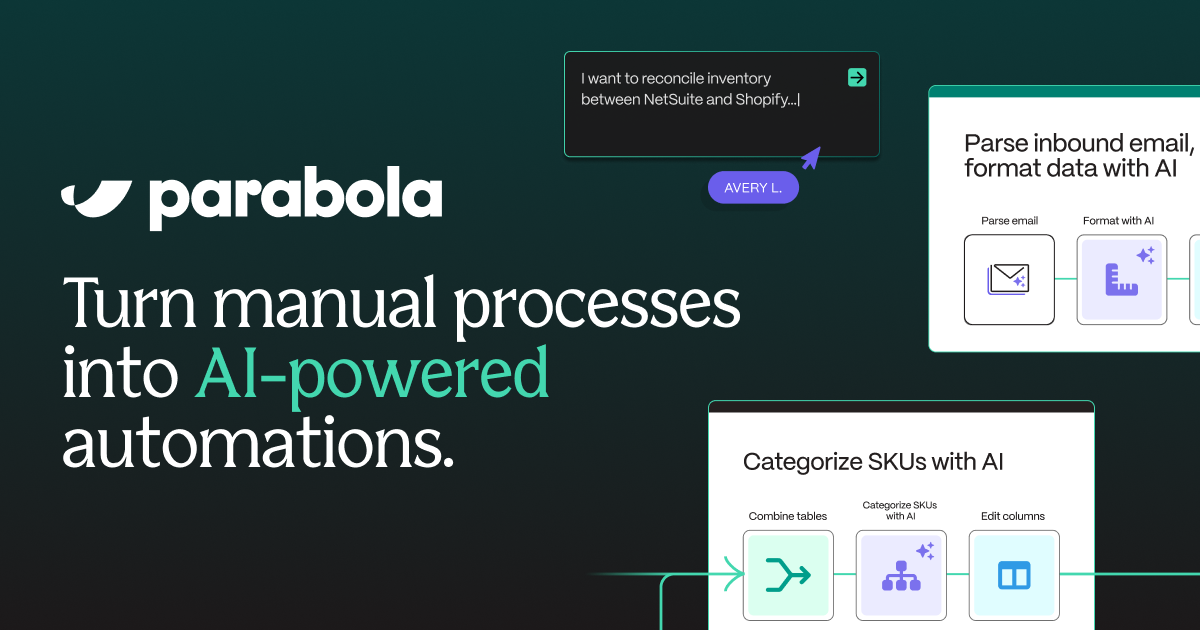Combine Salesforce and Mailchimp Data Using AI – Free Template
Automatically integrate Salesforce and Mailchimp data without writing a single line of code.

Automatically integrate Salesforce and Mailchimp data without writing a single line of code.









By integrating data from both platforms, you can create automated workflows that keep your contact lists synchronized between your CRM and email marketing system. This ensures consistent audience targeting and segmentation.
Integrating key information from both platforms allows you to automate processes like campaign response tracking, lead scoring based on email engagement, and opportunity attribution, helping you streamline your marketing operations.
Using Parabola's data visualization capabilities, you can create comprehensive reports and dashboards that showcase insights from your integrated platforms. These reports can be used to inform marketing decisions, track campaign performance, and communicate with stakeholders.








Request a demo and see how Parabola can automate
your most manual SOPs.